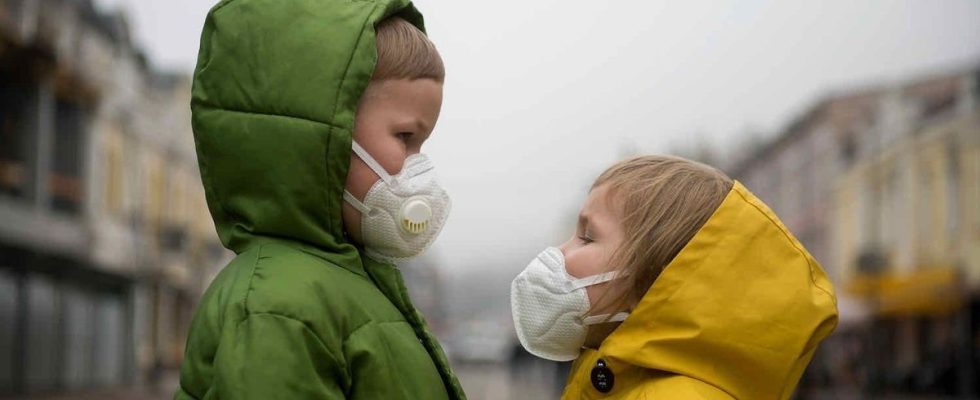Published on
Updated
Reading 2 min.
Not all children are exposed to pollution to the same extent or with the same consequences. The social origin of families plays a role in these disparities, resulting in more respiratory pathologies and emergency hospitalizations.
While air pollution causes nearly 40,000 deaths each year in the country, the new report carried out by DREES, a department of the Ministry of Health, is cause for concern. The study, published on January 4, reveals that some children are particularly affected by air pollution.
The poorest and richest children are most at risk
In mainland France, it is the poorest and richest children who are most exposed to air pollution, the study estimates.
“Young children living in the wealthiest households and the poorest households who are most exposed to air pollution due to fine particles of less than 2.5 micrometers“, she says.
This phenomenon could be explained by the particularly high level of pollution in urban areas, where the wealthiest families most often reside.
The poorest children would reside in ultra-polluted municipalities: “within these spaces, it is the children of the poorest households who are most exposed due to their location“, confirms the report.
More premature births among low-income children
Faced with the inhalation of fine particles, children are affected differently. The poorest children would therefore present a risk.1.5 times more likely to be born prematurely than the wealthiest“.
They represent “9.1% of births among the lowest 10% of the cohort studied“, against “6.1% of children among the wealthiest 10%“, warns DREES.
Premature children from poor homes would also require more care in their first hours of life.
More emergency hospitalizations for the poorest children
Before their third birthday, 1.9% of the poorest children would also be admitted to hospital urgently for “asthma”, compared to 1.2% of the wealthiest children.i.e. a risk multiplied by 1.6“, specifies the report.
Concerning emergency hospitalizations for bronchiolitis before the second birthday – which concern 3.6% of children, or 28,000 children born each year – “the differences are even more marked, with a double risk for the most modest compared to the most well-off“, warns the study again.
Finally, in terms of access to care, the poorest children would have less access to asthma medication.
“If we could reduce the average annual exposure to the main atmospheric pollutants by around 1% over the first year of life, which amounts to protecting children under the age of one from around two weeks of significant one-off increases of their exposure to these pollutants, then around 2000 hospitalized cases of bronchiolitis, 1800 hospitalized cases of asthma and 6100 cases of child care with anti-asthma medication would be avoided“, concludes DREES.
